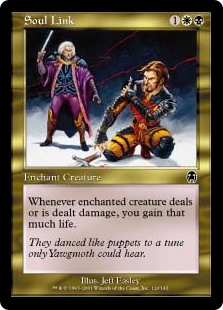If you’ve ever wandered through a flea market or sizable yard sale, chances are you’ve stumbled across some antiquated piece of machinery that piques your curiosity but whose purpose baffles both you and the person trying to get rid of it. Perhaps because neither one of you happened to be a carpenter from the 1940s or a woodworker who still prefers to use hand tools over more modern options. So there it sits, until it’s ultimately discarded as a lost relic, or, in those wondrous moments, stumbled upon by the person with the wherewithal to understand what they’re looking at and pick it up for a steal.
This scenario (which happens more than you’d think by the way) underscores two generally accepted facts about any tool. The first is that just because you don’t know what it’s used for doesn’t automatically make it useless. The second and more pertinent fact is that a tool is only as useful as the purpose it was designed for.
At least, most of the time. When it comes to Magic: the Gathering though, there are more exceptions to count on than you could shake a Saproling at, both on the macro level and for individual cards. Indeed, cards are continually adapted for uses wildly outside the intended effect that they were made for. There’s nothing wrong with this in principle, and most players take full advantage of this at some point or another. Heck, that’s part of the game’s allure.
Having players take advantage of diversified color tactics beyond the most glaring and optimized ones, on the other hand, is often a much harder sell.
For instance, Red’s cardinal desire is to hit things as quickly and most explosively as possible. By far the color with the most direct mindset, those who focus heavily on playing Red lean into its efficacy by only using cards that work towards that goal. It’s not that Red doesn’t flirt with other gameplay concepts such as stealing cards, artifact subthemes, and good old chaos effects, but for many players – especially those who play competitively – deviating from what the color does best is just setting one up for failure.
What many of those people fail to realize in doing so, however, is that retooling can actually be equally as advantageous, if not superior, if properly utilized. As in the case of this week’s card pick.
Today we have: Soul Link

Name: Soul Link
Edition: Apocalypse
Rarity: Common
Focus: Life Gain
Highlights: Soul Link is a very straightforward card, one of the dozen or so cards that differed enough in its ability to not be given Lifelink errata during the creation of the keyword. A variation on the card Spirit Link, Soul Link allows you to gain life whenever the enchanted creature deals or is dealt damage, providing a handy way to gain life while largely nullifying a creature’s danger to you. And all for only three mana.
The question becomes, then, why would a Black / White deck use such a card when more potent options are available? Both colors are individually well versed in removing creatures from the battlefield on a permanent or semi-permanent basis, be it from creature destruction, exiling, and Pacifism-style lockdowns. From an efficiency standpoint, why would this card be preferable in Commander over something that could simply eliminate the threat altogether?
Because multiplayer.
Practically speaking, there are three reasons. The first is that Soul Link can be used offensively as well as defensively. While the general application is to toss it on another player’s scary creature to avoid worrying about it hitting you for lots of damage, there’s nothing stopping you from putting it on your own creature and gaining life during your own attacking and blocking situations.
Secondly, there’s the capitalistic benefits of letting the creature stick around. That is, even if your opponent can’t deal lasting damage to you by attacking with the creature in question, there’s nothing stopping them from doing the same to other players. This allows them to continue to enact their own strategies while letting you gain life in the process.
Finally, in the same vein of thought, Soul Link has a built in political angle. In multiplayer games, removing another player’s creature from the board is a more politically charged act than simply neutralizing its threat to you. If you opted to eliminate an opponent’s creature, it’ll likely draw additional threat from that player later on. By letting it stick around, it’ll be seen more of a nuisance or inconvenience than an overt act of aggression to them, which either lets you benefit from the status quo, or at the very least, buy you time for another option later on.
Yes, Soul Link is a mighty simple tool, and one that seems like it would have a singular function. Yet if you’re wise enough to know how use it within in formats like EDH, you’ll find it’s a lot more multifaceted than the manual lets on.
Keep an eye out for us to be regularly featuring other more accessible-but-worth-it Commander cards going forward. In the meantime, we’ll keep the light on for you.
![]()
You can discuss this article over on our social media!
Do you have a particular Commander card to suggest for us to shine a future Spotlight on? You can send suggestions to ryan@cardboardrepublic.com
